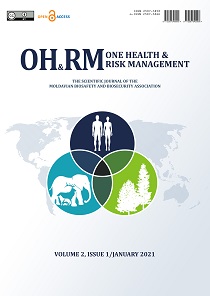Abstract
Introduction. Gram-negative bacilli belonging to the order Enterobacterales are normal inhabitants of the human gut, which also are the most common causative agents of both nosocomial and community-acquired infections in patients of all ages. Although not even a century has passed since Fleming's discovery of penicillin, the scientists have been alarmed by the fact that the "last resort antibiotics" viz. carbapenems have been compromised.
Material and methods. The analysis of fifty-two articles and documents regarding this topic was performed.
Results. The main mechanism of resistance to carbapenems in Enterobacterales is the production of carbapenemases, being enzymes that destroy all or almost all β-lactam antibiotics including carbapenems. According to Ambler’s classification β-lactamases can be distributed into four classes (A, B, C, and D) being based on primary amino acid sequence homology. The most important carbapenemases produced by Enterobacterales belong to class A (KPC), class B (metallo-β-lactamases NDM, VIM, IMP) and class D (OXA-48-like). Unlike other mechanisms of resistance, carbapenemase production is easily spread via plasmids making carbapenemase-producing Enterobacterales (CPE) a global challenge for healthcare providers.
Conclusions. CPE is not readily detected in the laboratory but the ability to detect carbapenemase production in Enterobacterales has very important infection control implications and therefore is essential for local infection control programs and national and international surveillance systems. Furthermore, local epidemiology of multidrug-resistant organisms has a major influence on the development of national clinical guidelines for antimicrobial use.
|
 Views: 507|
|
Views: 507|
|
This work is licensed under a Creative Commons Attribution 4.0 International License.
Copyright (c) 2020 One Health & Risk Management

